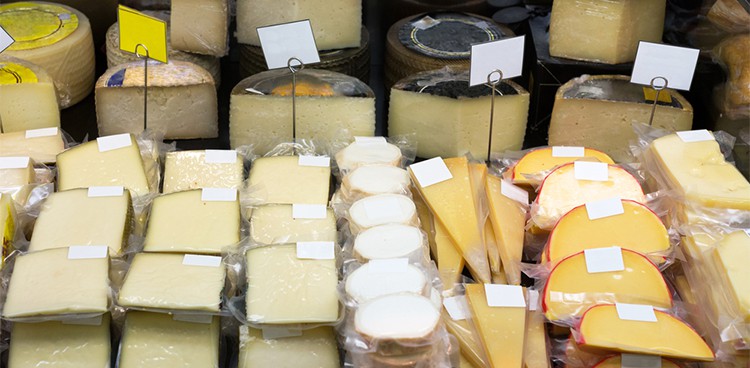
Let’s be honest with each other: have you ever been to a party with a cheeseboard and NOT seen Brie on it? Are you sick of using cheddar on all your sandwiches and mozzarella on all your pizzas? It’s easy to get stuck in cheese ruts, using the same tried-and-true cheeses over and over again. These suggestions are meant to help you expand your horizons a bit, and maybe bust you out of your cheese comfort zone. That doesn’t mean you have to quit eating your beloved cheddar altogether, but realize that sometimes a brief absence can make the heart grow fonder.
Below are some alternatives to cheeses you see and use all the time. Try one (or two) to spice things up.
Alternatives to Brie

Cowgirl Creamery’s Mt. Tam
Shock everyone you know by refusing to put Brie on your cheeseboard. While Brie may be the typical classy choice for a party, giving everyone the chance to eat a French cheese that they recognize, it couldn’t hurt to offer one nobody has ever tried. They’ll forgive you after they taste it.
Brie is a bloomy rind cheese. This means that the rind initially develops by mold or yeast “blooming” on the outside of the cheese. These fuzzy blooms are patted down to form the rind, which breaks down the fat and proteins of the cheese, making it creamier and runnier over time. Therefore, when looking for cousins of Brie, look for soft cheeses that might be oozing out of their rinds at room temperature.
Try a triple-crème bloomy rind, like Pierre Robert. Made in the Seine-et-Marne region of France, Pierre Robert is made from pasteurized cow’s milk. It’s rich and buttery but mild in flavor, making it widely appealing.
For an American spin, try the Mt. Tam by Cowgirl Creamery. It has that rich and buttery flavor with notes of mushroom, grass, and hay underneath. It has complex flavors while remaining accessible.
Alternatives to Cheddar

Gruyère is the most well known Alpine cheese and is claimed by both France and Switzerland.
Who doesn’t love cheddar? It’s an easy go-to cheese, and because it’s often produced in the US, you’ll find it at any local grocery store. It’s also not quite fair to lump all cheddar in the same basket, as there are different varieties that taste very different from each other.
In honor of the diversity of the style, stick with cheddar but go for one that has been aged for at least a year. Aged Cheddar pack a sharper punch than their milder counterparts, and those more familiar with the mild version might not believe it’s the same thing.
To branch out further, try Cheshire. Made in England, Cheshire is dense and crumbly, giving it the same firm feel as Cheddar and at a young age it is mild and milky. If you like aged Cheddar, chances are you’ll also enjoy aged Cheshire.
Venture to the Alps and try Gruyère. Another hard cheese, Gruyère is one of Switzerland’s best known cheeses (sort of making it like cheddar for the Swiss). Firm and dense and slightly flaky, the perfect Gruyère balances sweet and salty and reveals nutty or even caramel flavors. It melts well, too, and is great for a grilled cheese.
Alternatives to Swiss

Photo Credit: “Quarter of Emmental cheese…” by Valentyn Volkov | Shutterstock
Speaking of Alpine cheeses, holey Swiss cheese is a popular choice for American consumers. However, most of the Swiss cheese we eat in the US is not actually produced in Switzerland. If you’d like some cheeses made abroad with slightly fancier names, you got some options.
Emmentaler looks incredibly similar to Swiss, with large holes throughout the paste of the cheese. It has a nutty, slightly sweet flavor and is smooth and dense in texture.
Vacherin Fribourgeois is softer than Gruyère or Emmentaler and also has the distinction of being one of the rarest cheeses on this list, made only by certain artisan cheesemakers. The rind is washed, which makes its smell stronger than your other choices, but the taste of the cheese doesn’t reflect what you might typically think of as “stinky cheese.” The flavor is nutty and milky, and the texture is buttery.
Alternative to Mozzarella

Did you know that mozzarella is traditionally made from the milk of water buffalo? Called mozzarella di bufala, it’s the more traditional milk to use when making the cheese. Buffalo milk has twice the fat of cow’s milk, which makes the cheese delightfully creamy. Try it against cow’s milk mozzarella and see what you think!
Feature Photo Credit: Tasty cheese in packs and in bulk on counter at store by Iakov Filimonov via Shutterstock



